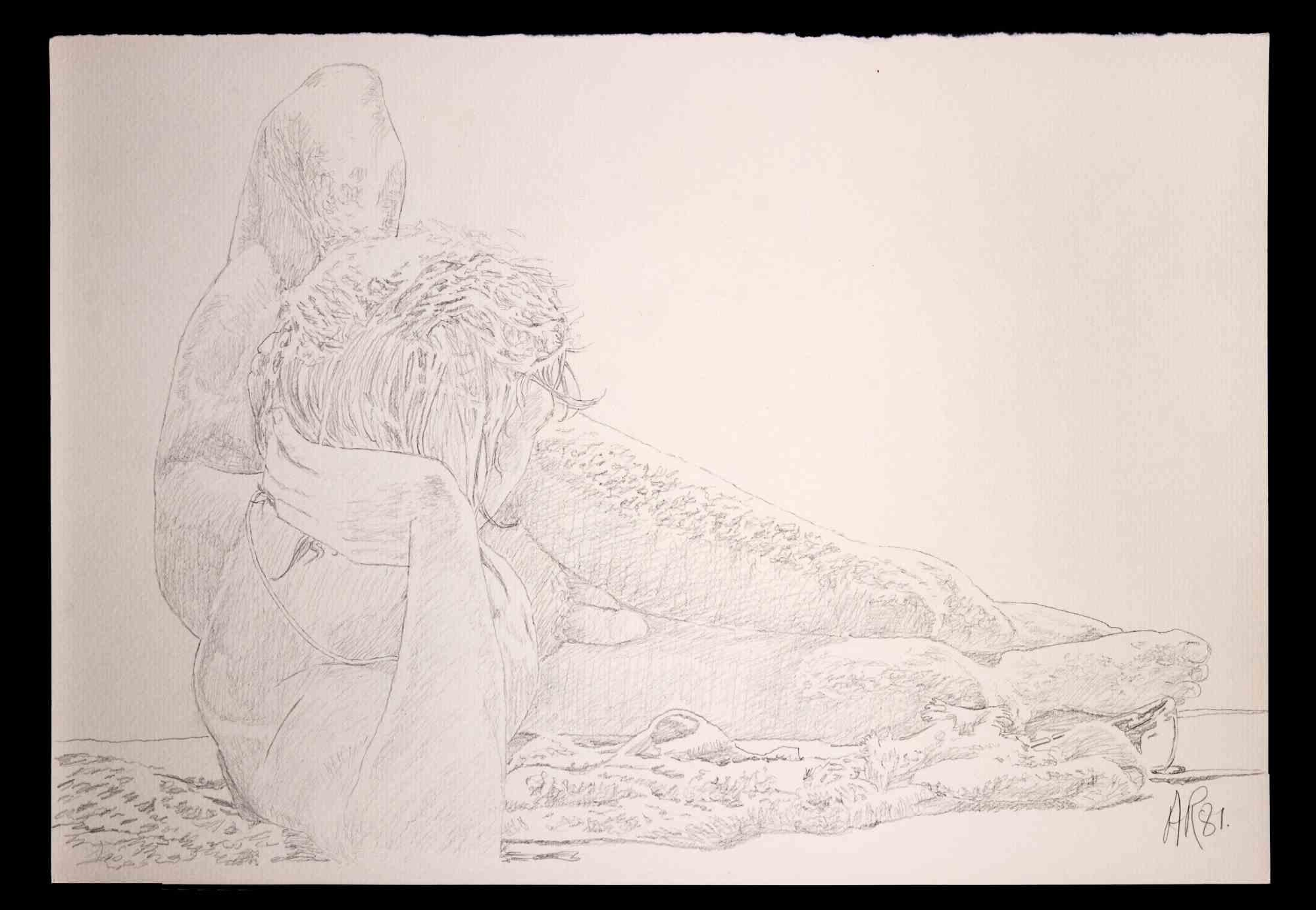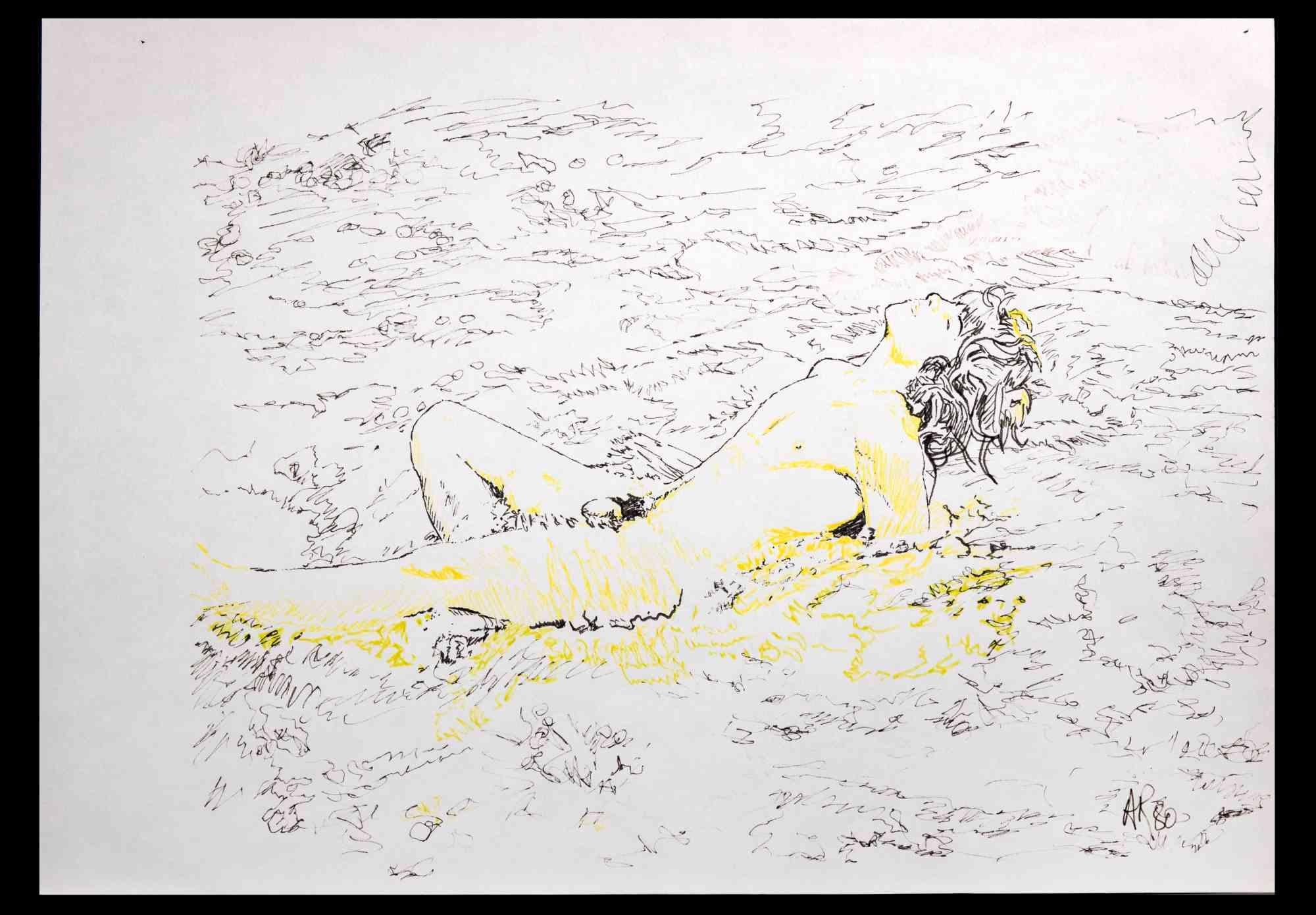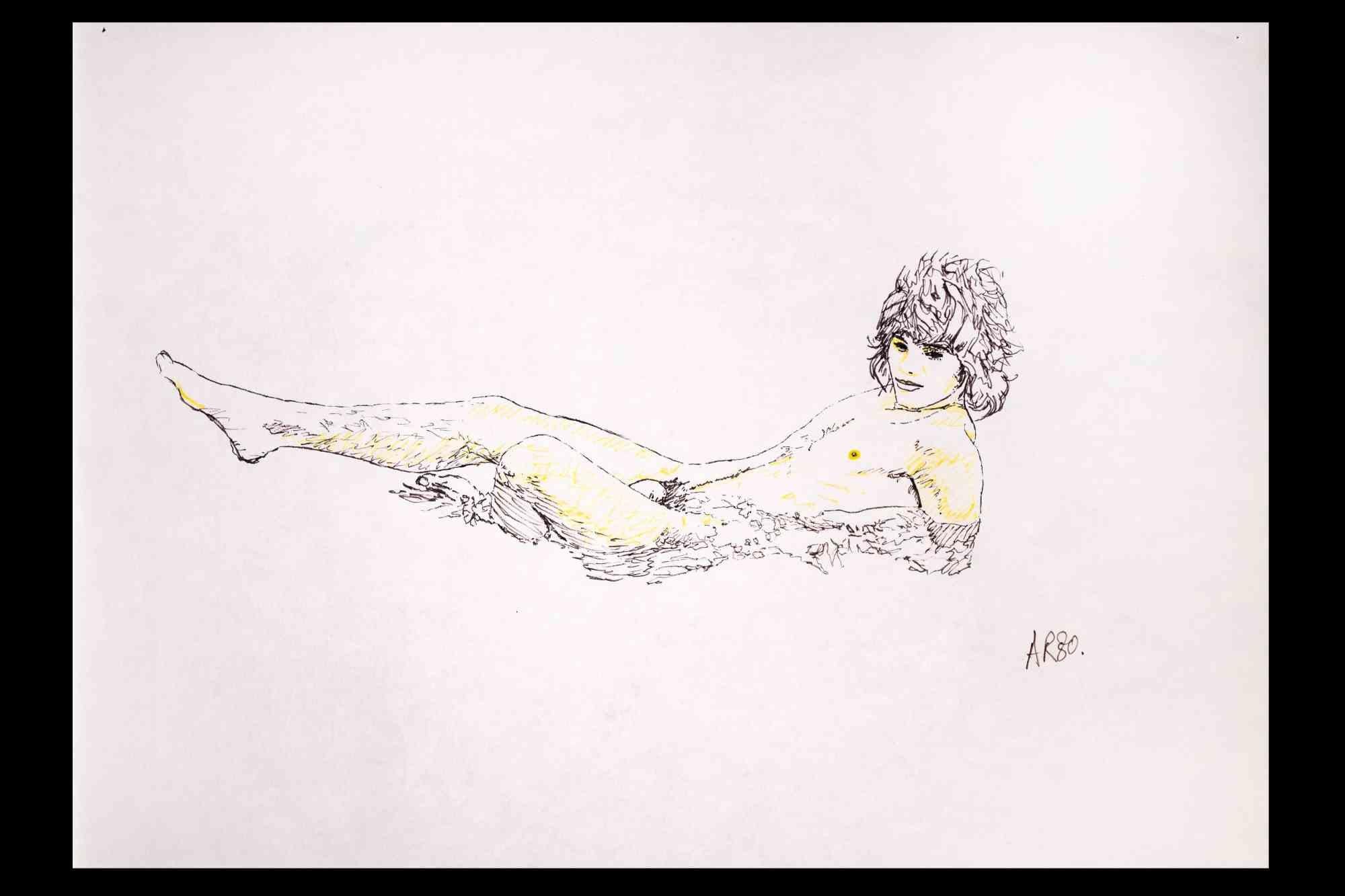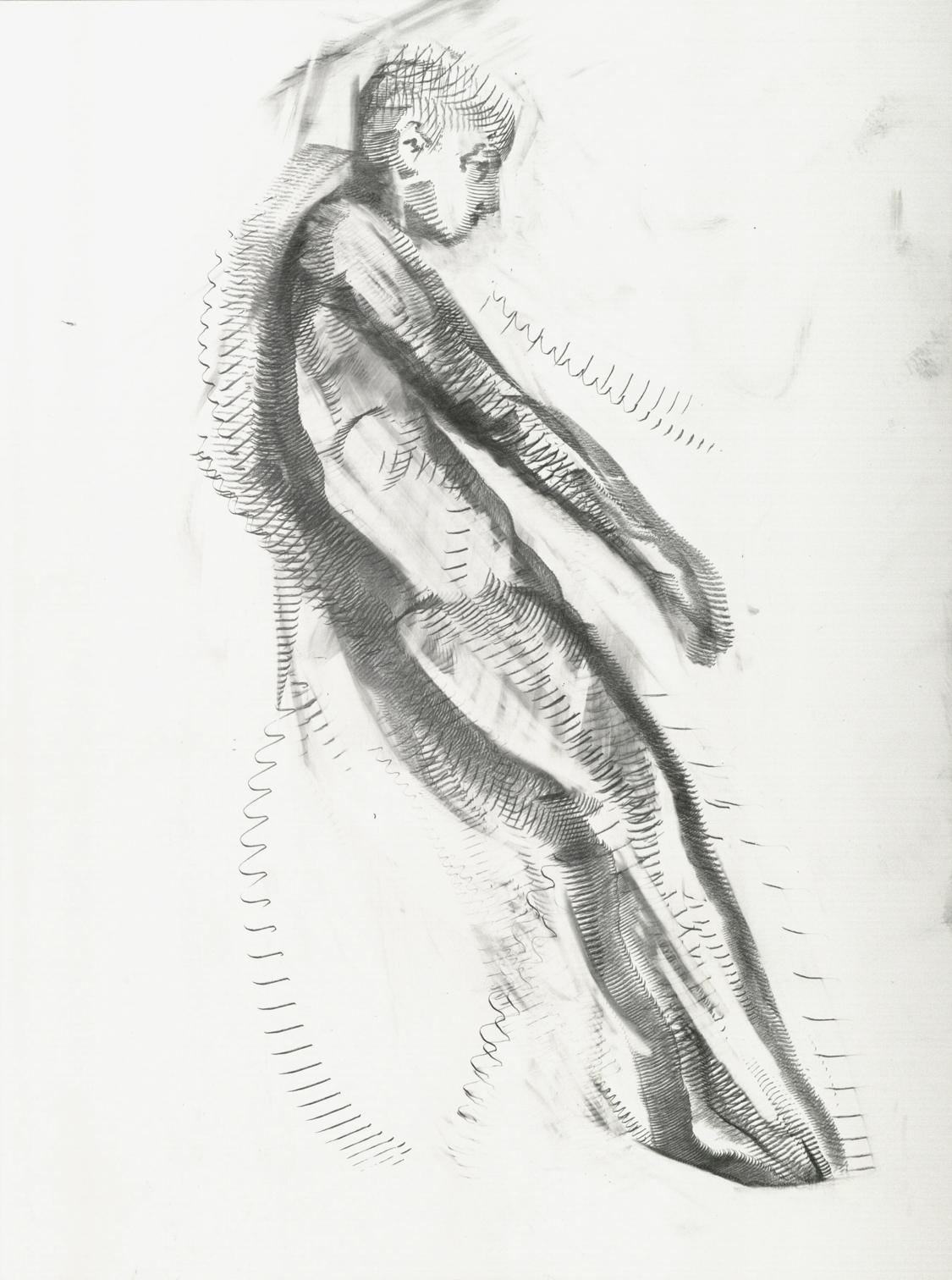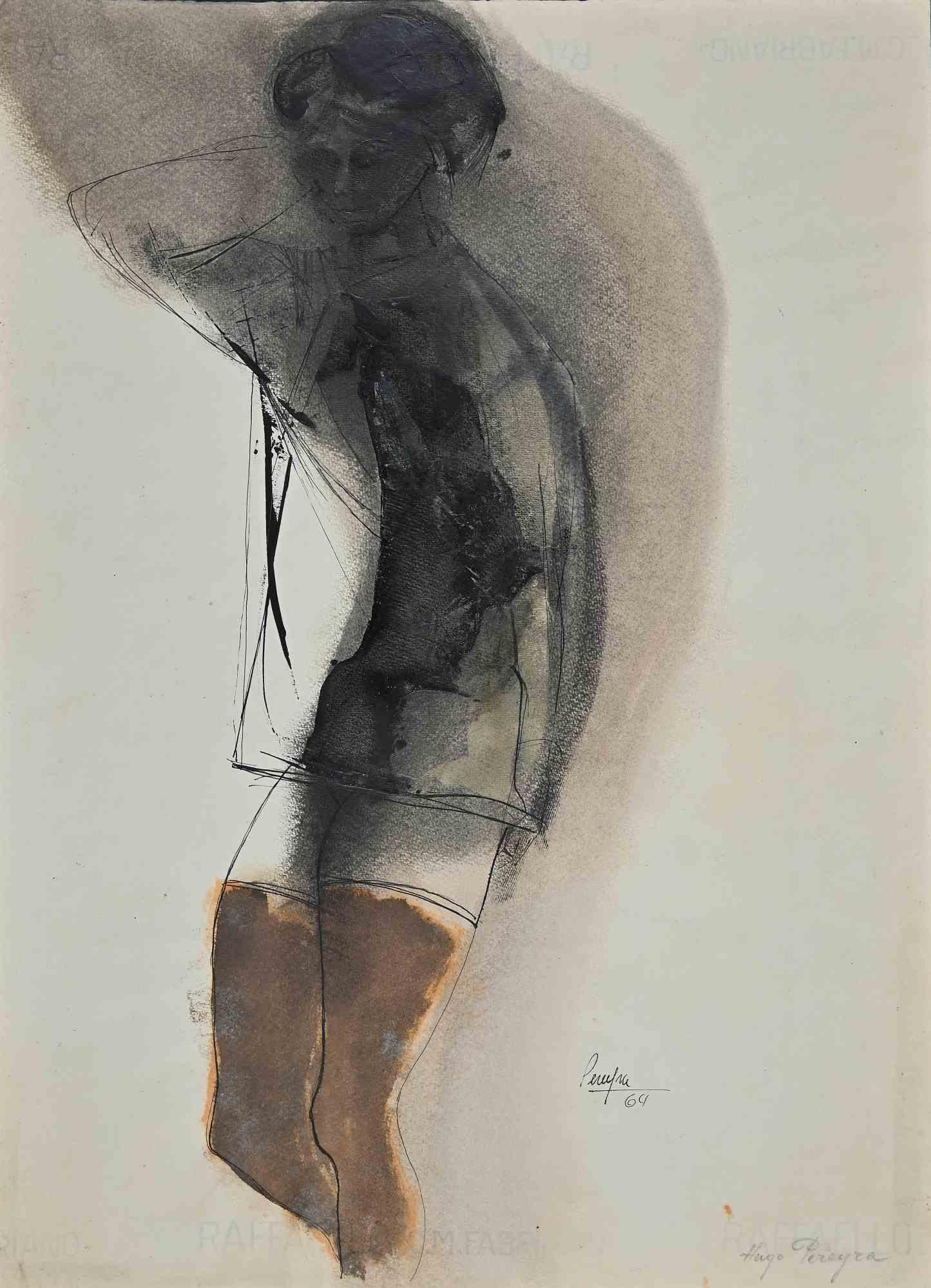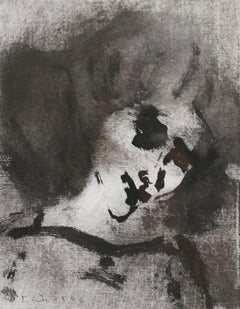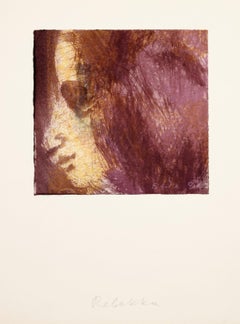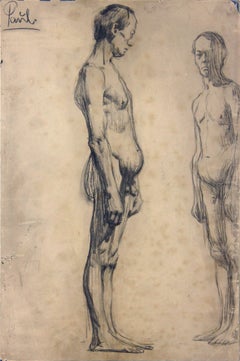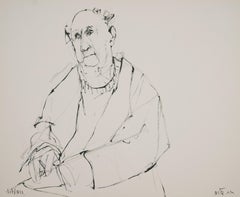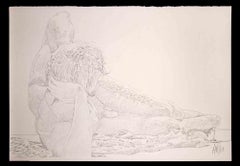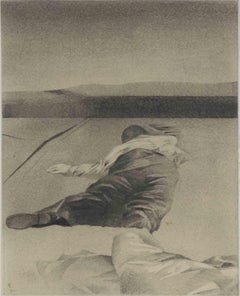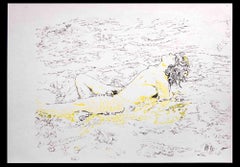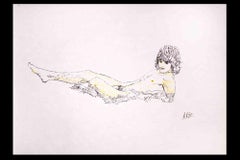Items Similar to Lying Boy / - Fragile childlikeness -
Video Loading
Want more images or videos?
Request additional images or videos from the seller
1 of 8
Alfred FuchsLying Boy / - Fragile childlikeness -1996
1996
$526.19
$657.7420% Off
£391.17
�£488.9620% Off
€440
€55020% Off
CA$734.03
CA$917.5320% Off
A$796.25
A$995.3220% Off
CHF 418.71
CHF 523.3920% Off
MX$9,688.79
MX$12,110.9920% Off
NOK 5,234.60
NOK 6,543.2620% Off
SEK 4,936.88
SEK 6,171.0920% Off
DKK 3,350.87
DKK 4,188.5820% Off
About the Item
Alfred Fuchs (1925 Saarbrücken - 2003 Prague), Lying Boy. Charcoal drawing on strong paper, 30 x 41.5 cm, signed A.[lfred] Fuchs and dated [19]96.
- small pinholes at corners, a little bit creased at margins, otherwise good condition
- Fragile childlikeness -
About the artwork
With this drawing, Alfred Fuchs continues his depictions of children, revisiting and reworking a motif from his 1983 print cycle Children's Lives.
The drawing depicts a young boy. Although he is dressed, wearing trousers with crossed braces and presumably shoes, the boy is crouched in a fetal position with his back to us. He wants to withdraw from everything and be all by himself. It remains unclear whether he has fallen asleep or remained awake in this position. The hands, which seem to be raised, suggest a defensive posture, as if the boy wants to stop what is destroying his childhood. The posture is one of defense and protection, which makes it all the more vulnerable and brings out the childlike in a particularly vivid way.
The boy has withdrawn from us. His individuality remains hidden by his protective turning away. In this way, the boy becomes a child as such, standing in for the childishness that Alfred Fuchs himself was robbed of all too early.
Alfred Fuchs creates the intimate and at the same time allegorical image of the child with virtuoso charcoal strokes. The entire body seems to have emerged from one continuous, curving line. It is as if the artist, in the act of drawing, has embraced the child itself, which is represented by his drawing. Despite the broad strokes, the drawing expresses a tenderness that illustrates the child's sensitivity.
About the artist
As Alfred Fuchs' father was Jewish, the family emigrated from Saarbrücken to Prague in October 1935 to escape the increasing persecution by the Nazi regime. From 1939 to 1943, Alfred Fuchs trained there as a typeface painter. In Prague, however, the family was not immune to the Nazi regime. At the height of the persecution, Alfred Fuchs was interned in the Bystrice concentration camp near Benesov in 1944. After World War II, he completed a five-year course of study with Professor Vlastimil Rada at the Academy of Fine Arts in Prague.
In his art, he initially dealt with war and persecution. In 1962-1973, together with Vendelín Zrubecký, he created a mural in Auschwitz.
Later, the depiction of children and mothers became a central moment in Alfred Fuchs' oeuvre, which also has a biographical dimension.
"A search for traces of memories of a happy, carefree childhood. A childhood that once began in Saarbrücken and was abruptly ended by the Second World War and the persecution of the Jews.
- Beate Reifenscheid
Alfred Fuchs participated in numerous international exhibitions. His works have been shown in the Czech Republic, Poland, Russia, Hungary, Germany, Norway, Monaco, Australia, New Zealand, Canada and Japan. He also received several awards and became an honorary member of the European Academy Otzenhausen in 1998.
He was not only a painter, but also an extremely virtuoso graphic artist. The Czech postage stamps produced according to his designs mark the peak of his popularity.
Selected Bibliography
Saur. Allgemeines Künstlerlexikon, Band 46, München - Leipzig 2005, S. 33.
Arno Krause u. Roswitha Jungfleisch (Hrsg.): Unter der Kerze ist Schatten. Das Leben des Malers Alfred Fuchs, Blieskastel 2005.
GERMAN Alfred Fuchs (1925 Saarbrücken - 2003 Prague), Lying Boy. Charcoal drawing on strong paper, 30 x 41.5 cm, signed A.[lfred] Fuchs and dated [19]96.
- small pinholes at corners, a little bit creased at margins, otherwise good condition
Exposé as PDF
- Fragile childlikeness -
About the artwork
With this drawing, Alfred Fuchs continues his depictions of children, revisiting and reworking a motif from his 1983 print cycle Children's Lives.
The drawing depicts a young boy. Although he is dressed, wearing trousers with crossed braces and presumably shoes, the boy is crouched in a fetal position with his back to us. He wants to withdraw from everything and be all by himself. It remains unclear whether he has fallen asleep or remained awake in this position. The hands, which seem to be raised, suggest a defensive posture, as if the boy wants to stop what is destroying his childhood. The posture is one of defense and protection, which makes it all the more vulnerable and brings out the childlike in a particularly vivid way.
The boy has withdrawn from us. His individuality remains hidden by his protective turning away. In this way, the boy becomes a child as such, standing in for the childishness that Alfred Fuchs himself was robbed of all too early.
Alfred Fuchs creates the intimate and at the same time allegorical image of the child with virtuoso charcoal strokes. The entire body seems to have emerged from one continuous, curving line. It is as if the artist, in the act of drawing, has embraced the child itself, which is represented by his drawing. Despite the broad strokes, the drawing expresses a tenderness that illustrates the child's sensitivity.
About the artist
As Alfred Fuchs' father was Jewish, the family emigrated from Saarbrücken to Prague in October 1935 to escape the increasing persecution by the Nazi regime. From 1939 to 1943, Alfred Fuchs trained there as a typeface painter. In Prague, however, the family was not immune to the Nazi regime. At the height of the persecution, Alfred Fuchs was interned in the Bystrice concentration camp near Benesov in 1944. After World War II, he completed a five-year course of study with Professor Vlastimil Rada at the Academy of Fine Arts in Prague.
In his art, he initially dealt with war and persecution. In 1962-1973, together with Vendelín Zrubecký, he created a mural in Auschwitz.
Later, the depiction of children and mothers became a central moment in Alfred Fuchs' oeuvre, which also has a biographical dimension.
"A search for traces of memories of a happy, carefree childhood. A childhood that once began in Saarbrücken and was abruptly ended by the Second World War and the persecution of the Jews.
- Beate Reifenscheid
Alfred Fuchs participated in numerous international exhibitions. His works have been shown in the Czech Republic, Poland, Russia, Hungary, Germany, Norway, Monaco, Australia, New Zealand, Canada and Japan. He also received several awards and became an honorary member of the European Academy Otzenhausen in 1998.
He was not only a painter, but also an extremely virtuoso graphic artist. The Czech postage stamps produced according to his designs mark the peak of his popularity.
Selected Bibliography
Saur. Allgemeines Künstlerlexikon, Band 46, München - Leipzig 2005, S. 33.
Arno Krause u. Roswitha Jungfleisch (Hrsg.): Unter der Kerze ist Schatten. Das Leben des Malers Alfred Fuchs, Blieskastel 2005.
GERMAN VERSION
Alfred Fuchs (1925 Saarbrücken - 2003 Prag), Hingekauerter Junge. Kohlezeichnung auf starkem Papier, 30 x 41,5 cm, rechts unten mit A.[lfred] Fuchs handsigniert und auf [19]96 handdatiert.
- an den Ecken kleine Nadellöcher, in den Randbereichen leichte Knickspuren, sonst in gutem Zustand
Exposé als PDF
- Fragile Kindlichkeit -
zum Kunstwerk
Mit der großformatigeren Kohlezeichnung schließt Alfred Fuchs an seine Kinderdarstellungen an und nimmt ein Motiv seines 1983 angefertigten druckgraphischen Zyklus Kinderleben wieder auf und überarbeitet es erneut.
Die Zeichnung veranschaulicht einen kleinen Jungen. Obwohl er bekleidet ist, er trägt eine Hose mit überkreuzten Hosenträgern und wohl auch Schuhe, hat sich der Junge in Embryostellung hingekauert und wendet uns dabei den Rücken zu. Er möchte sich allem entziehen und ganz für sich sein. Es bleibt offen, ob er in dieser Haltung eingeschlafen oder wachgeblieben ist. Die wie erhoben wirkenden Hände suggerieren eine Abwehrhaltung, als ob der Junge abhalten wolle, was seine Kindheit zunichtemacht. Die eingenommene Haltung ist eine Abwehr- und Schutzhaltung, die gerade darum umso verletzlicher wirkt und das Kindliche besonders eindringlich zur Darstellung bringt.
Der Junge hat sich uns entzogen. Durch seine schutzsuchende Abwendung bleibt seine Individualität verborgen. Damit wird der Junge zum Kind als solchem, das für die stets gefährdete Kindlichkeit einsteht, die Alfred Fuchs selbst nur allzu früh geraubt worden ist.
Das intime und zugleich allegorische Kinderbild schafft Alfred Fuchs mit virtuos gesetzten Kohlestrichen. Der ganze Körper scheint aus einer durchgehenden, in sich geschwungenen Strichführung hervorgegangen zu sein. Es ist, als habe der Künstler im Zeichenakt das Kind selbst umfasst, das durch seine Zeichnung überhaupt erst zur Darstellung gekommen ist. Trotz der breiten Strichlage drückt der Zeichenduktus eine Zärtlichkeit aus, die zugleich die kindliche Sensibilität veranschaulicht.
zum Künstler
Da Alfred Fuchs' Vater Jude was, emigrierte die Familie im Oktober 1935 von Saarbrücken nach Prag, um der zunehmenden Verfolgung durch das Naziregime zu entgehen. Von 1939 bis 1943 ließ sich Alfred Fuchs dort zum Schriftenmaler ausbilden. In Prag war die Familie allerdings nicht dem Zugriff der Nazi entzogen. Als Höhepunkt der Verfolgung wurde Alfred Fuchs 1944 in das Konzentrationslager Bystrice bei Benesov interniert. Nach dem Zweiten Weltkrieg absolvierte er ein fünfjähriges Studium bei Professor Vlastimil Rada an der Akademie der bildenden Künste in Prag.
Künstlerisch setzte er sich zunächst mit dem Krieg und der Verfolgung auseinander. Von 1962-1973 realisierte er zusammen mit Vendelín Zrubecký in Auschwitz ein Wandgemälde. Später wurde die Darstellung von Kindern und Müttern ein zentrales Moment in Alfred Fuchs' Oeuvre, das ebenfalls eine biographische Dimension hat.
„[Eine] Spurensuche nach den Erinnerungen an eine glückliche, unbekümmerte Kindheit. Eine Kindheit, die in Saarbrücken einmal begann und die der Zweite Weltkrieg und die Judenverfolgung jäh beendet haben.“
- Beate Reifenscheid
Alfred Fuchs war an zahlreichen internationalen Ausstellungen beteiligt. Seine Werke wurden unter anderem in Tschechien, Polen, Russland, Ungarn, Deutschland, Norwegen, Monaco, Australien, Neuseeland, Kanada und Japan gezeigt. Zudem erhielt er mehrere Preise und wurde 1998 Ehrenmitglied der Europäischen Akademie Otzenhausen.
Er war nicht allein Maler, sondern betätigte sich auch äußerst virtuos als Druckgrafiker. Den Höhepunkt seiner Popularität markieren die nach seinen Entwürfen hergestellten tschechischen Briefmarken.
Auswahlbibliographie
Saur. Allgemeines Künstlerlexikon, Band 46, München - Leipzig 2005, S. 33.
Arno Krause u. Roswitha Jungfleisch (Hrsg.): Unter der Kerze ist Schatten. Das Leben des Malers Alfred Fuchs, Blieskastel 2005.

About the Seller
5.0
Vetted Professional Seller
Every seller passes strict standards for authenticity and reliability
Established in 2014
1stDibs seller since 2023
21 sales on 1stDibs
- ShippingRetrieving quote...Shipping from: Berlin, Germany
- Return Policy
Authenticity Guarantee
In the unlikely event there’s an issue with an item’s authenticity, contact us within 1 year for a full refund. DetailsMoney-Back Guarantee
If your item is not as described, is damaged in transit, or does not arrive, contact us within 7 days for a full refund. Details24-Hour Cancellation
You have a 24-hour grace period in which to reconsider your purchase, with no questions asked.Vetted Professional Sellers
Our world-class sellers must adhere to strict standards for service and quality, maintaining the integrity of our listings.Price-Match Guarantee
If you find that a seller listed the same item for a lower price elsewhere, we’ll match it.Trusted Global Delivery
Our best-in-class carrier network provides specialized shipping options worldwide, including custom delivery.More From This Seller
View AllWoman's head / - Female Wisdom -
Located in Berlin, DE
Emil Wachter (1921 Neuburgweiser - 2012 Karlsruhe), Woman's head, 1986. Drawing in ink on canvas, 24.5 cm x 19 cm (sheet size), 44.5 cm x 36.4 cm (frame), signed ‘E. Wa[achter]’ lowe...
Category
1980s Realist Figurative Drawings and Watercolors
Materials
Paper
Rebekka / - Rebekka's Appearance -
Located in Berlin, DE
Emil Wachter (1921 Neuburgweiser - 2012 Karlsruhe), Rebekka, 1987. Watercolor mounted on cardboard, 13.5 (height) x 14 cm (width). Signed “E.[mil] Wa[chter]” in pencil within the ima...
Category
1980s Realist Figurative Drawings and Watercolors
Materials
Paper
Self-portrait - Homo nudus -
Located in Berlin, DE
Bruno Paul (1874 Seifhennersdorf - 1968 Berlin). Self-portrait, c. 1895. Pencil on paper, mounted on cardboard, 53.5 x 35 cm, signed 'Paul' at upper left.
- Homo nudus -
About the artwork
In a mirrored situation, Bruno Paul looks at himself in the picture. While his body, which is the size of the format, is shown in profile parallel to the picture, he turns his head into the picture in order to become aware of himself there, whereby the lighter use...
Category
1890s Realist Figurative Drawings and Watercolors
Materials
Pencil
$3,348 Sale Price
20% Off
Contemplating old man / - The View into Life -
By Ruth Schloss
Located in Berlin, DE
Ruth Schloss (1922 Nuremberg - 2013 Kfar Shmaryahu), Contemplating old man, around 1990. Mixed media on watercolor paper, 33 cm x 40 cm, signed “Schloss” lower left and again in Hebr...
Category
1990s Realist Figurative Drawings and Watercolors
Materials
Paper
The Prophet / - The Burden of the Prophet -
Located in Berlin, DE
Wilhelm Gross (1883 Schlawe - 1974 Oranienburg-Eden), The Prophet, c. 1955. Woodcut on thin laid paper, 43 cm x 23 cm (depiction), 61 cm x 43 cm (sheet size), signed “Dr. Wilh.[elm] Gross” in pencil lower right, inscribed “Orig.[inal] Holzschnitt (Handabdruck)” lower left and inscribed “Aus der ”Ecce homo“ Folge” in the center.
- The wide margin with traces of pressing due to the impression, the sitter's left foot with a small purple stain, otherwise in vibrant condition.
- The Burden of the Prophet -
The large-format woodcut shows a prophet figure that takes up almost the entire height of the sheet. However, instead of seeing something in the distance that is still hidden from our eyes - as is usual in depictions of prophets - the figure has raised his hands in a defensive gesture, as if the prophet is trying to ward off what he has seen. At the same time, however, the position of the arms is an acceptance of the inevitable, which only those who recognize what is to come will have to bear for the time being, which is why the figure in the painting - despite its size - appears almost solitary, alone and exposed to the burden of suffering.
In a manner reminiscent of the folds of medieval wooden sculptures...
Category
1950s Realist Figurative Prints
Materials
Paper
Two sitting old people / - Familiar Strangeness -
By Ruth Schloss
Located in Berlin, DE
Ruth Schloss (1922 Nuremberg - 2013 Kfar Shmaryahu), Two sitting old people, around 1990. Mixed media on watercolor paper, 24 cm x 32 cm, signed “Schloss” lower left and again in Heb...
Category
1990s Realist Figurative Drawings and Watercolors
Materials
Paper
You May Also Like
Boy Lying Down - Drawing by Anthony Roaland - 1981
Located in Roma, IT
Boy lying down is an original drawing on pencil realized by Anthony Roaland in 1981. Hand-signed and dated by the artist on the lower right margin.
I...
Category
1980s Contemporary Figurative Drawings and Watercolors
Materials
Pencil
Lying Man - Drawing by Enrique Vasi - Mid-20th Century
Located in Roma, IT
Lying Man is an original modern artwork realized in the mid-20th Century by Enrique Vasi.
Pencil drawing on paper.
Includes frame: 32,6 x 1.5 x 24.3 cm
Date and signed on the back
Category
Mid-20th Century Modern Figurative Drawings and Watercolors
Materials
Ink, Pencil
Man Lying - Original Drawing by Anthony Roaland - 1980
Located in Roma, IT
Man lying is an original drawing in pen realized by Anthony Roaland in 1980. Hand-signed and dated by the artist on the lower right margin.
In the fo...
Category
1980s Contemporary Figurative Drawings and Watercolors
Materials
Pen
Man Lying Down - Drawing by Anthony Roaland - 1980
Located in Roma, IT
Man lying down is an original drawing on pencil realized by Anthony Roaland in 1980. Hand-signed and dated by the artist on the lower right margin.
I...
Category
1980s Contemporary Figurative Drawings and Watercolors
Materials
Pencil
"Sons and Lovers" Drill Drawing, #2
By Michael O'Keefe
Located in Dallas, TX
Signed by artist "M. O'KEEFE 2013" at lower left.
Media is graphite on clay-coated panel.
Overall dimensions including the frame are 18 x 15 inches.
Category
2010s Academic Figurative Drawings and Watercolors
Materials
Clay, Panel, Graphite
Portrait of Boy - Original Drawing by Hugo Pereyra - 1964
Located in Roma, IT
Portrait of Boy is an original artwork realized by Hugo Pereyra in 1964.
Original Ink and Watercolor
Hand-signed.
Category
1960s Modern Figurative Prints
Materials
Watercolor, Ink
More Ways To Browse
Embrace Drawing
Charcoal Studies On Paper
Fairy Drawing
Vintage Vogue Illustrations
E Wilson
Old Master Drawing 16th
Clown Drawing
Encre De Chine
Fashion Drawing Art Deco
Original Boat Drawing
1939 Pen And Ink
Classic Painting And Drawing
Mark Tansey
Old Master Italian Drawings
Paper Cutting Art
Arab Drawing
Ballerina Drawing
Costume Design Watercolor
